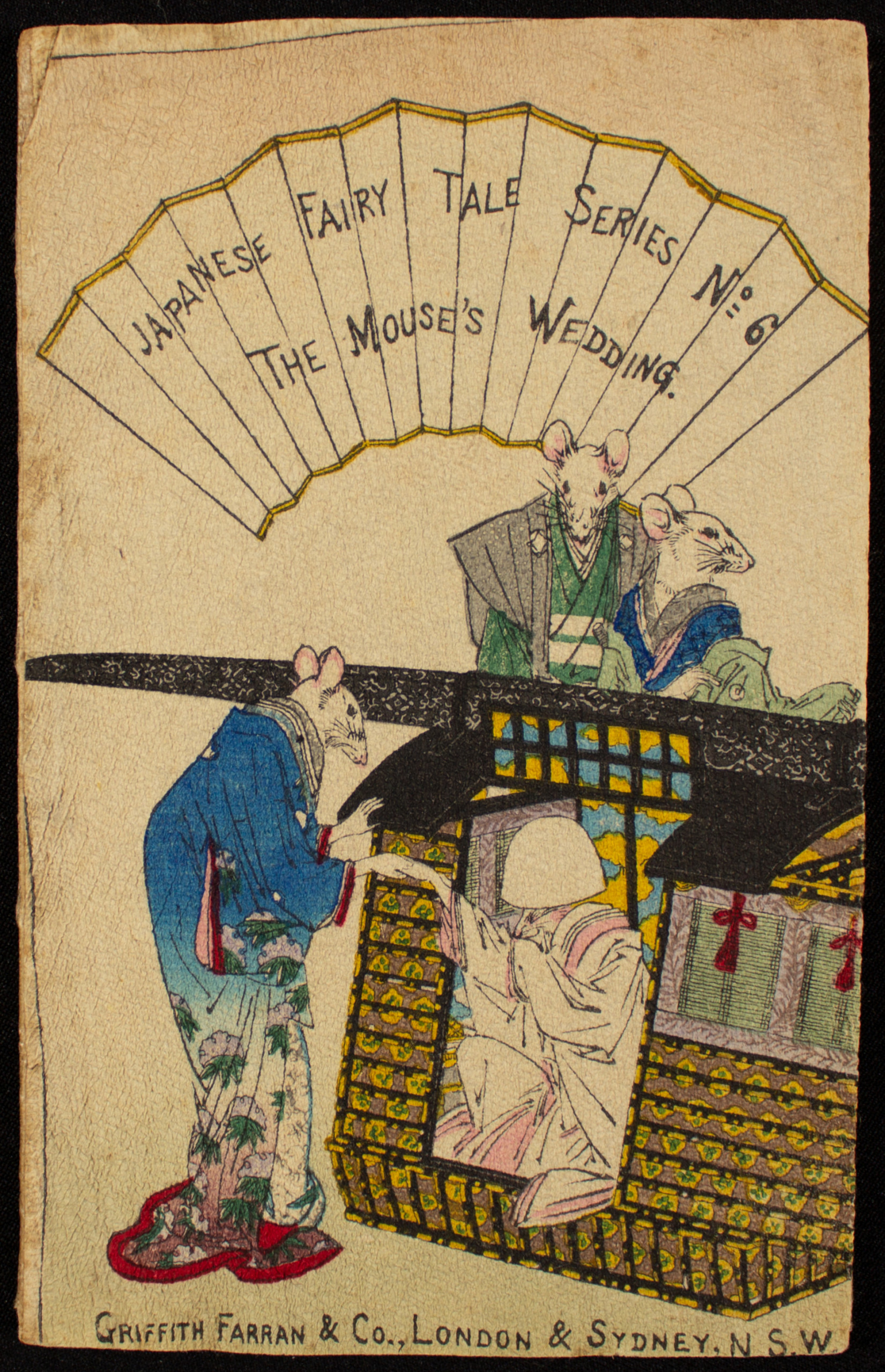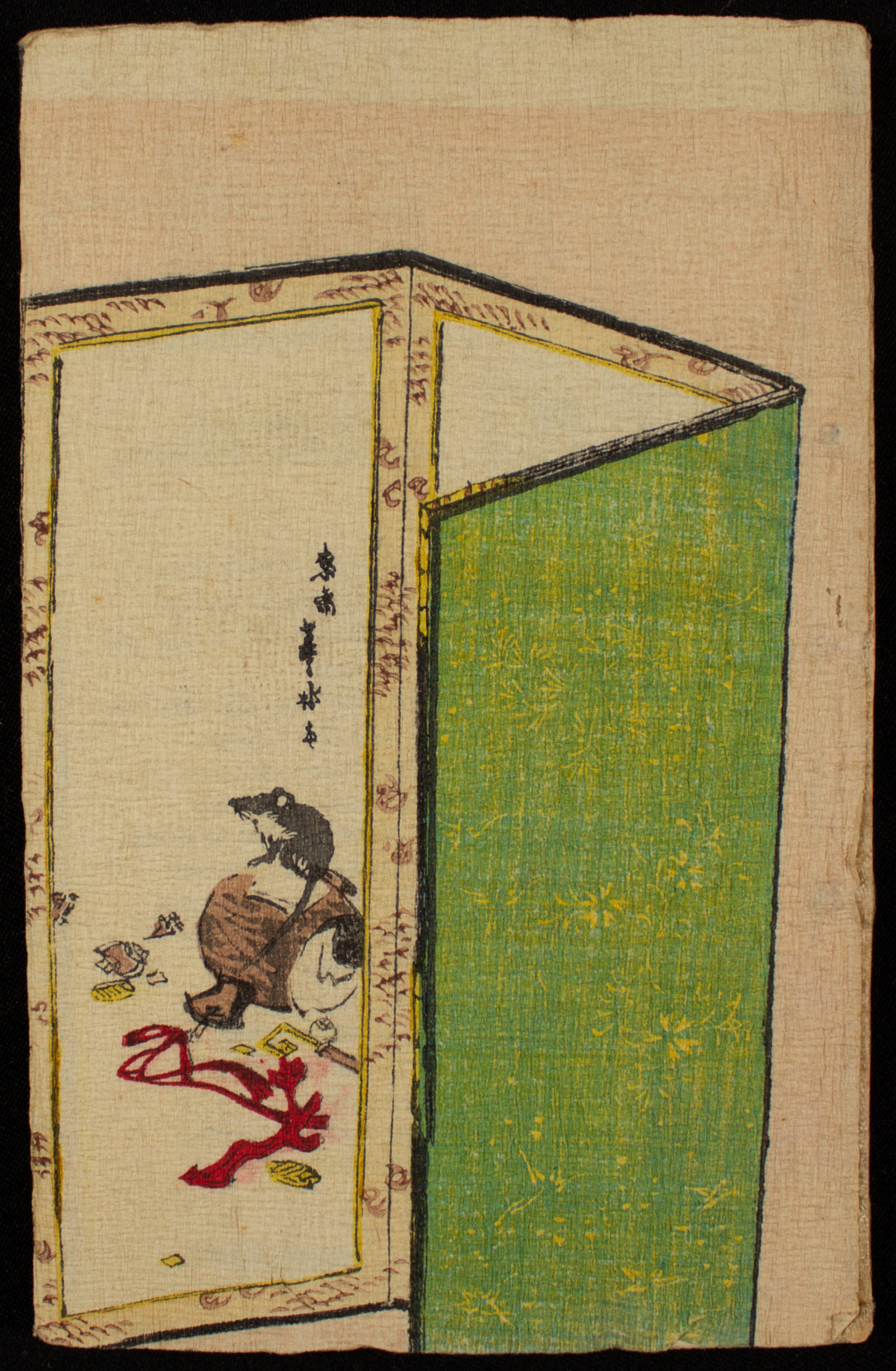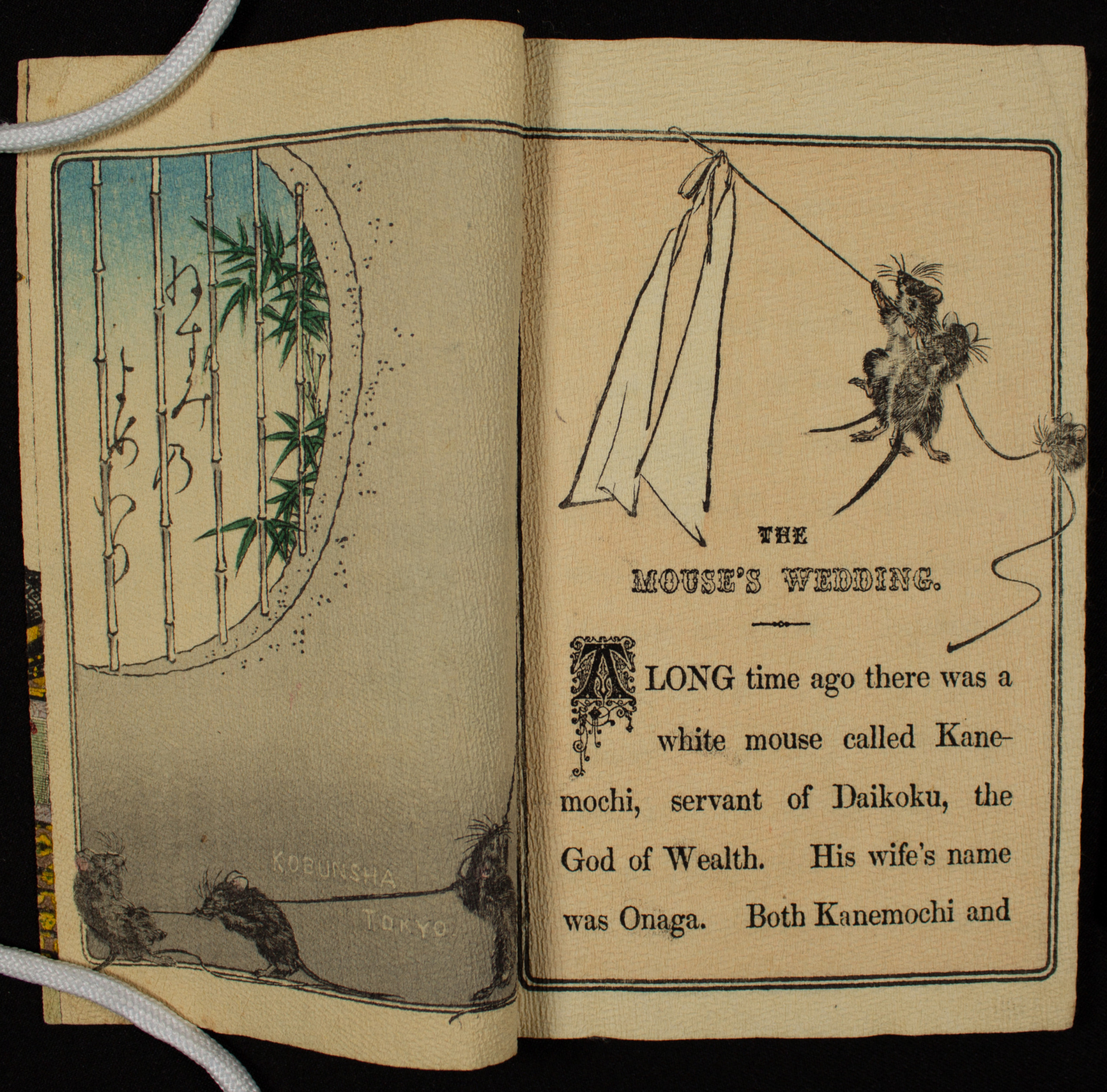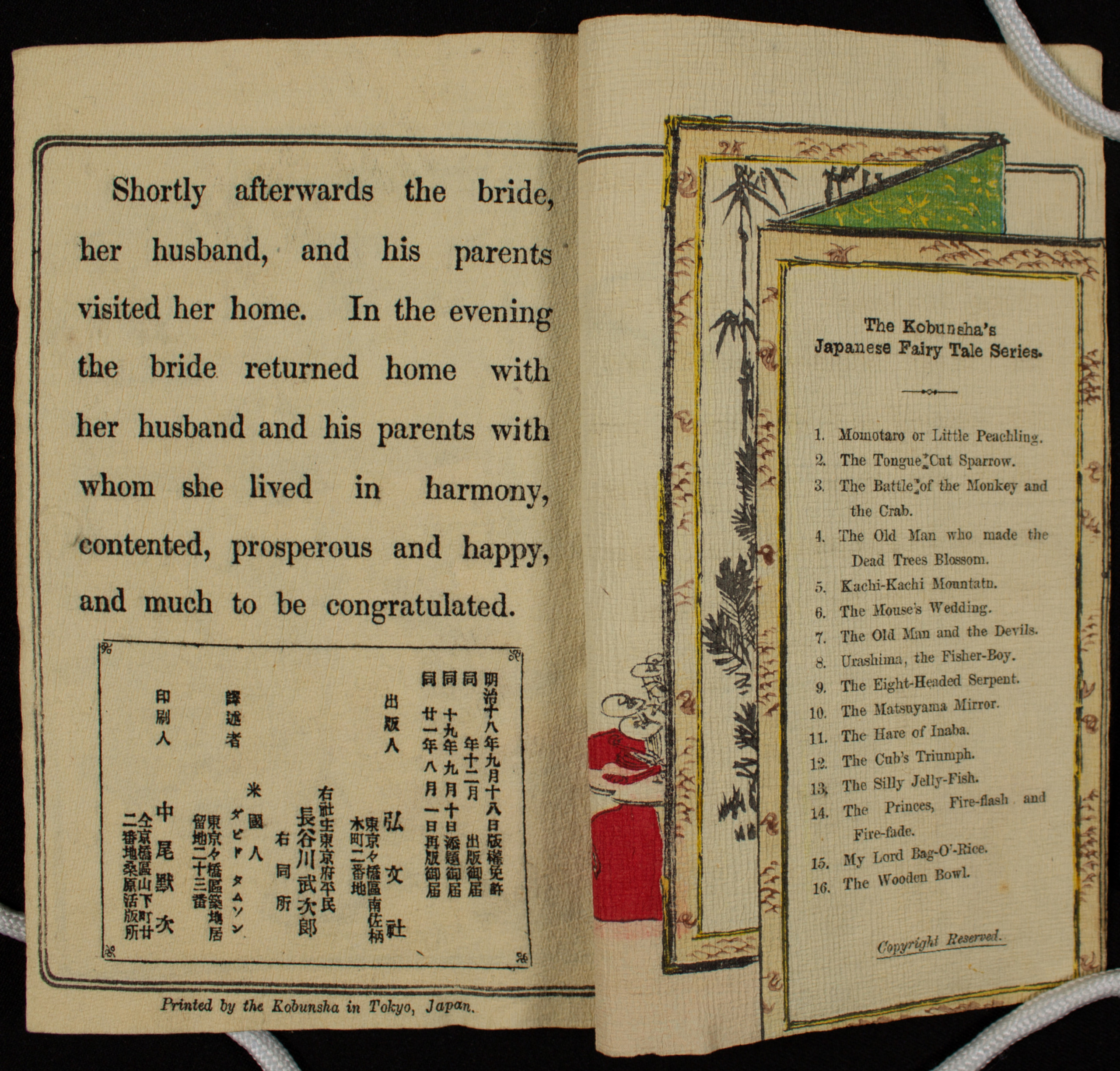Original Publication Date: December 1885 (Meiji 19)
This Printing: August 1888 (Meiji 21); Kōbunsha Imprint for Griffith & Farran
Binding: hidden musubi-toji binding to mimic a Western style with glue along the spine, spine covered with a small strip of white silk
Call Number: Special Collections (General Locked Shelving): By Appointment Only; PZ8.J272
Cataloger: Laura Smith
Publisher: Hasegawa Takejirō
Author/Translator: David Thompson
Artist: Kobayashi Eitaku
Printer: Nakao Mokuji
A mouse couple, Kanemochi (servant of Daikoku, the god of wealth) and Onaga, live very discreetly with their son, Fukutaro, to avoid any attention from the cat. The couple decides Fukutaro is old enough to marry and receive their property so they can retire. Their relative, Chudayu, has an eligible daughter named Hatsuka, and they arrange for a go-between to negotiate terms. Fukutaro sends Hatsuka “the usual articles,” including an obi (belt), silk cotton, various foods, and saké. In return, Hatsuka sends a linen kami-shimo, and the same types of food and saké, sealing the arrangement. On a specifically “lucky day,” the bride’s family prepares for her transference to her husband’s home, including making clothes, blackening her teeth “as a sign that she would not marry a second husband,” and teaching her to be a dutiful wife. Kanemochi prepares by cleaning the house, arranging what’s necessary for the ceremony, organizing guests, and sending servants to meet the bride on her journey. The bride travels with a procession of attendants as she’s carried in a palanquin, and Kanemochi meets her at the gate and the couple meets in a parlor with the go-between. At the go-between’s signal, the couple exchange three cups of saké, drinking from each cup in turns, after which the guests exchange cups with the bride, thus creating the union. After the wedding the Hatsuka, Fukutaro, Kanemochi, and Onaga visit the bride’s family before returning to the husband’s house, and they all lived happily ever after.
This printing has a back catalog containing volumes 1 through 16. There is some dispute on the artist of this volume with some listing it as Kobayashi Eitaku and others listing it as Suzuki Kason. Based on the date of the volume and the style, Kobayashi Eitaku is more likely to be the artist here.



